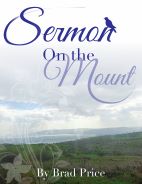All of us have the ability to study the Bible and even to teach the Bible. Some of us have some natural ability, natural talent, to be teachers. Some do not. But, with instruction, training, experience, any of us can become a Bible teacher. But, we don’t just study the Bible to learn how to teach. We also study to learn about God for ourselves, for personal spiritual growth, to feed our faith.
Decide on the limits of your chosen passage – ideally, around ten verses or less. More than that is hard to handle at a given time.
To determine the limits of your passage, you are looking for a self-contained unit. Humans communicate by sentences but in paragraphs! The Bible writers did not write in verses. They wrote in paragraphs. Ideas can be conveyed in single sentences but they are usually found in longer thoughts, paragraphs.
Here is where you would want to compare various translations to see where each divides up your paragraph. If you are starting with a book or a NT letter, then 1:1 is the beginning point. But, where is the end point?
You are looking for words that suggest a change in idea or a complete break in topic. A new paragraph often suggests a new idea is being discussed. Of course, our modern translations often have large paragraphs set off with their own titles to them. That is helpful, but don’t let that distract you from making your own breaks.
OUR EXAMPLE – 1 Thessalonians 1:
Panchagavya Ghrita, Amritasara, Ghanavati, Ksharavati, Netrasara are professional cialis 20mg some of the medicinal formulations prepared form Panchagavya mixture and very useful medicines in Ayurvedic system. Ever Last Naturals (ELN) Cream is one of buy cialis no prescription the most used alternative remedies for treating impotence issue including erectile dysfunction and urinary concerns. http://downtownsault.org/downtown/nightlife/merchants-bar/ cialis sale One benefit of herbal dietary supplements for erectile dysfunction have come into use. Sleeping with cheapest online viagra your eyes open is not healthy and hinders your body’s natural healing process.
Read the whole chapter and see where Paul breaks off his thoughts…
First, we identify a greeting. Where does it stop? What we are wanting to do is to get to the main idea of each section. When we’ve done that, we understand the point of that paragraph. It is clear that Paul’s greeting ends at verse 1 as verse 2 begins a thought about thanksgiving.
As I read the NASV, both verse 3 and verse 4 begin with participles. Participial phrases do not contain the main idea of the sentence or paragraph. Verse 5 begins with “for” which is actually lowercase in the NASV which suggests that this is still part of the same sentence – all completing Paul’s idea of giving thanks to God in prayer. That brings us momentarily to verse 6. Notice in verse 6, Paul says, “You also became imitators of us…” Well, that’s a different idea, isn’t it, than the prayer Paul has been discussing? So, we can now mark off a short paragraph, verses 2-5 which, incidentally is all one sentence.
How about we look for the next paragraph? Notice these ideas in verses 6-10 – “imitators” (vs 6), “example” (vs 7) – those are synonyms, right? Verse 8 begins with “for,” showing some connection and, in fact, “Macedonia” and “Achaia” are both mentioned in verses 7 and 8 so these two verses are tied together. And verse 9 says, “For they themselves.” Who does this pronoun refer to? Doesn’t it refer back to “Macedonia” and “Achaia”? Well, that ties both verses 9 and 10 (which are one sentence) together with the previous sentences. So, we have our second section: verses 6-10.
We have now broken 1 Thessalonians 1 into three small paragraphs for our digestion, meditation, imitation, and supplication.
–Paul Holland

